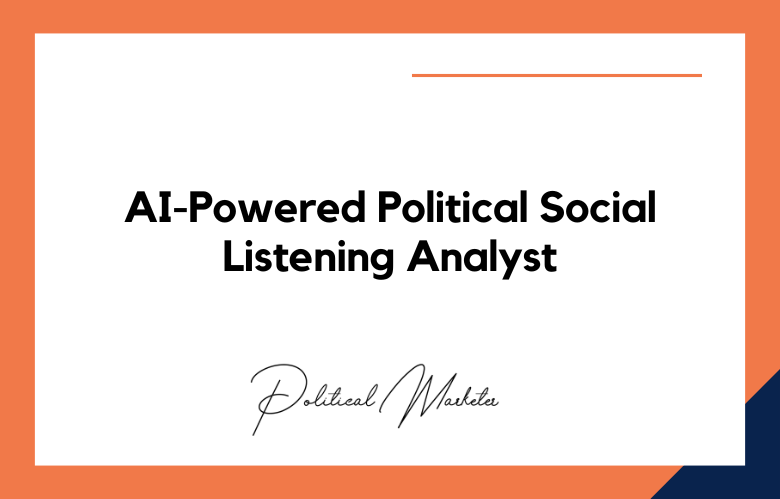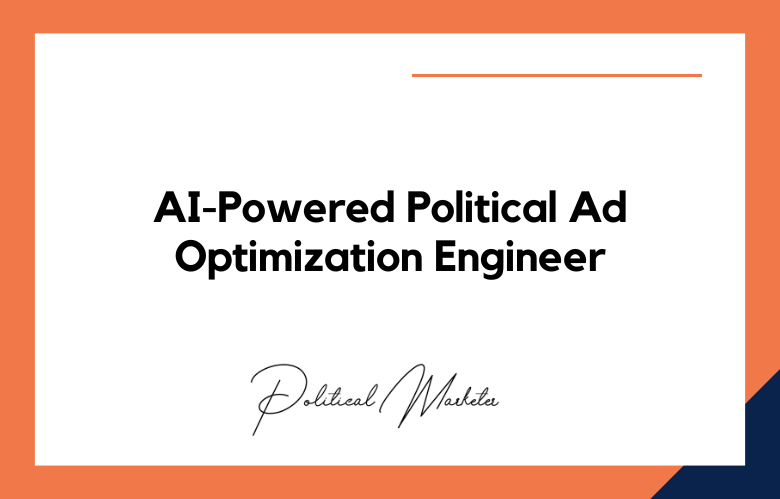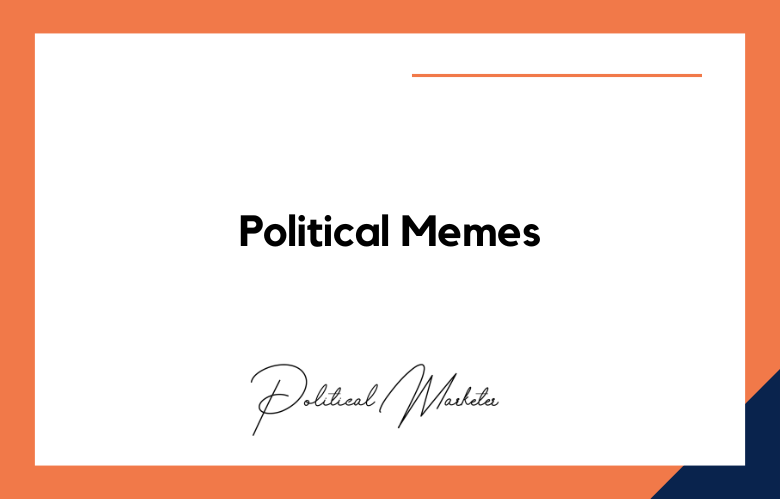Data analytics in electoral campaigns has been a game-changer in politics, particularly in the last few decades. With the boom of technological advancements, artificial intelligence (AI) has taken over traditional data analytics, paving the way for a more precise and robust approach to voter targeting.
Microtargeting, with the help of AI, has been a revolutionary phenomenon in the political arena. We’ll explore the concept of microtargeting using A.I. and its potential to transform electoral campaigns.
Precision Politics: Microtargeting with A.I.
Political campaigns constantly seek ways to reach their target audience precisely and accurately. One of the newest strategies being employed by movements is microtargeting with AI.
Microtargeting with AI involves using data analysis and AI algorithms to identify specific groups of voters based on demographics, interests, and behaviors. These groups can be targeted with personalized messages and advertisements tailored to their interests and needs.
The benefits of microtargeting with AI are numerous. For one, it allows campaigns to more effectively reach key demographics, such as young voters or rural communities, who may have needed help to engage in the past. It also allows for more efficient use of campaign resources, as ads can only target those most likely to be swayed by them.
AI-Powered Campaign Strategies: Winning Hearts and Votes
With the advancement of technology and the rise of data-driven decision-making, AI-powered campaign strategies have become increasingly prevalent in political campaigns. These strategies involve using A.I. algorithms to analyze voter data and generate insights into individual voter behaviors and preferences.
By leveraging AI-powered tools, political campaigns can create highly personalized and targeted messaging, which helps increase engagement and conversion rates. AI-powered campaigns allow political candidates to stay on top of trends in real time, making it easier to adjust messaging and strategy.
In recent years, numerous political campaigns have successfully implemented AI-powered strategies to win hearts and votes. For example, during the 2020 U.S. Presidential election, both the Biden and Trump campaigns heavily utilized AI-powered tools to identify voter trends and develop personalized messaging.
Unlocking Voter Potential: Microtargeting with A.I.
In the digital age, political campaigns have focused on personalized messaging to elevate their vote count. Microtargeting with A.I. has become a popular tool for these campaigns to identify and reach potential voters more individually.
Using A.I. algorithms, campaigns can analyze vast amounts of data on individuals, such as their voting history, demographics, and online behavior, to craft custom messages that speak specifically to their interests and values. This personalized approach is more effective, as it connects with voters more emotionally and is more likely to inspire action.
Furthermore, microtargeting with AI allows campaigns to reach previously overlooked demographic groups and encourage them to participate in the democratic process. This could lead to increased voter turnout, which is critical for a healthy democracy.
Intelligent Politics: Microtargeting for Electoral Success
As election season draws near, politicians increasingly turn to intelligent politics, specifically microtargeting, to secure electoral success. This sophisticated approach uses data analytics to identify specific population subsets with the highest probability of supporting a particular candidate or initiative. Instead of casting a wide net, candidates can now deliver tailored messaging directly to those most likely to be receptive to it.
Microtargeting is a complex process that involves collecting and analyzing data from various sources, such as social media, online purchasing history, and voting records. This data is then used to identify patterns and preferences among different groups of voters. These insights can be used to create highly targeted campaigns to appeal to specific demographics or individuals.
Data-Driven Democracy: Microtargeting Voters with A.I.
In today’s media-driven world, political campaigns have increasingly turned towards data-driven approaches to target voters more effectively. With the rise of social media and microtargeting, advanced algorithms powered by artificial intelligence are essential for political parties to gain insights into their target audience.
Microtargeting enables political candidates to focus their resources on particular demographics of voters most receptive to their messages. This practice emerged in the early 2000s and has since been increasingly refined over the years. With AI, microtargeting accuracy has improved dramatically, allowing political campaigns to tailor their messaging and outreach strategies precisely.
Winning Hearts in the Digital Age: Microtargeting with A.I.
In an era where online presence and social media leverage are indispensable in almost every aspect of life, political campaigns and electoral processes are no exception. With the advent of AI-based technologies, microtargeting strategies have gained significant momentum in recent years.
The fundamental goal of these tactics is to deliver the right message to the right person at the right time to ensure desired outcomes. This notion sounds simple; however, it holds great power and comes with significant ethical concerns.
Microtargeting is a marketing approach that involves analyzing vast amounts of data to accurately understand individual preferences and interests. A.I. is at the heart of this operational model, as it can process extended data payments at an incredibly rapid pace, identify hidden patterns and dynamics, and create personalized user experiences on a large scale.
Political campaigns have found this technology to be a potent tool to build voter profiles, locate strategic demographics, and cater to them with customized messages. This capability enables candidates to appeal to the specific interests of potential voters and substantially increase their chances of success.
The Art of Persuasion: Microtargeting Voters with AI
With the emergence of artificial intelligence (AI), political campaigns have taken on a new level of sophistication. Microtargeting voters with AI has become a modern-day art of persuasion, capable of influencing election outcomes and, ultimately, the trajectory of society.
AI algorithms are trained to analyze vast amounts of data, ranging from demographics, social media activity, voting records, and consumer behavior. This information is then used to create highly targeted ads, messages, and strategies that resonate with each voter.
One advantage of microtargeting voters with AI is its ability to increase efficiency and reduce costs. Campaign funds can be allocated more effectively and efficiently by focusing only on individuals likely to vote or support a given candidate.
However, this approach has drawn criticism for its potential to be used to manipulate voters with personalized messaging and propaganda.
Next-Level Campaigning: Microtargeting with A.I.
Microtargeting with AI has become the next level of political campaigning strategies. With the advancement of technology, politicians and marketers can now utilize AI to tailor their messages and advertisements to specific target groups. A.I. analyzes many data points, including social media activity, browsing history, and online behavior, to model and predict an individual’s beliefs, interests, and preferences.
Microtargeting with AI in political campaigns has become increasingly popular in recent years. During the 2016 U.S. presidential campaign, Cambridge Analytica, a political consulting firm, utilized microtargeting to promote Donald Trump’s candidacy. They targeted specific individuals using personalized ads, emails, and social media messages.
Conclusion:
Microtargeting has revolutionized electoral campaigns, and AI has undoubtedly improved the effectiveness of this technique. Microtargeting allows a campaign to spend more resources on the most productive areas, potentially increasing voter turnout and securing electoral success.
While ethical considerations remain, if campaigns can ensure a transparent and honest approach to microtargeting, it could significantly advance the democratic process, empowering voters and creating a more informed electorate. Ultimately, microtargeting with AI is a powerful tool that can help to make a more engaged and politically active electorate.
Call: +91 9848321284
Email: [email protected]
Precision Targeting for Electoral Success: Microtargeting with AI – FAQs
What Is Microtargeting In Political Campaigns?
Microtargeting is a technique that uses data analytics and AI to deliver personalized messages to small, segmented groups of voters based on their behavior, preferences, and demographics.
How Does AI Improve Microtargeting Accuracy?
AI processes large datasets in real time to identify patterns, predict voter behavior, and segment audiences with precision that surpasses manual targeting methods.
What Types Of Data Are Used For Microtargeting?
Campaigns use voter registration records, browsing history, social media activity, purchasing behavior, and geographic data to build voter profiles.
Why Is Microtargeting Effective In Electoral Campaigns?
It increases engagement and persuasion by delivering messages that resonate with each voter’s specific needs, beliefs, or concerns.
Can Microtargeting Influence Swing Voters?
Yes. AI-powered microtargeting helps identify undecided voters and tailor messages that address their key issues, increasing conversion rates.
What Role Does Predictive Analytics Play In AI Microtargeting?
Predictive models forecast how individuals are likely to vote, respond to messaging, or engage with campaign content, enabling more strategic outreach.
How Do Campaigns Build AI-Powered Voter Segments?
They use clustering algorithms to group voters based on shared characteristics such as ideology, location, economic status, or online behavior.
What Are The Risks Of Over-Microtargeting?
Excessive segmentation can lead to message inconsistency, alienate broader audiences, or trigger data privacy concerns if transparency is lacking.
How Can AI Detect Voter Sentiment During A Campaign?
AI analyzes real-time reactions from social media, surveys, and emails to detect sentiment shifts and allow timely messaging adjustments.
Is Microtargeting Legal In All Democracies?
Legal status varies; while allowed in many countries, there are growing concerns and regulations around data consent, transparency, and fairness.
What Platforms Support AI-Driven Microtargeting?
Platforms like Meta (Facebook), Google, YouTube, and programmatic ad exchanges allow segmented ad delivery powered by AI insights.
How Is Geolocation Data Used In Political Microtargeting?
Location data helps campaigns tailor outreach based on local issues, events, or voter concerns, especially useful in constituency-specific campaigns.
Can AI Microtargeting Be Used For Volunteer Recruitment?
Yes. Targeted ads and personalized emails can recruit supporters and volunteers who align closely with the campaign’s goals or local presence.
What Tools Are Used For Microtargeting With AI?
Tools include CRM systems, data management platforms, predictive analytics tools, ad tech platforms, and voter file analytics services.
How Can Campaigns Ensure Ethical Use Of Microtargeting?
By being transparent about data collection, avoiding manipulative messaging, and complying with data protection laws like GDPR and CCPA.
What’s The Difference Between Macro And Microtargeting?
Macrotargeting delivers broad messages to large audiences, while microtargeting focuses on narrow segments with hyper-personalized messaging.
How Does AI Enable Real-Time Campaign Optimization?
AI tools continuously learn from user engagement, allowing campaign teams to refine targeting, creative content, and delivery time on the fly.
Can Microtargeting Improve Donor Conversion?
Absolutely. Campaigns can increase fundraising efficiency by targeting potential donors with tailored appeals based on interests and giving behavior.
How Can Campaigns Measure The Success Of AI Microtargeting?
Metrics include engagement rates, conversion rates, donation lift, volunteer signups, and voter turnout in target segments.
What Are Some Examples Of Successful AI-Driven Microtargeting In Politics?
Major political campaigns, such as Obama 2012 and the BJP’s digital efforts in India, have successfully used data-driven microtargeting to influence key voter blocs.










